#solarenergy
Photo
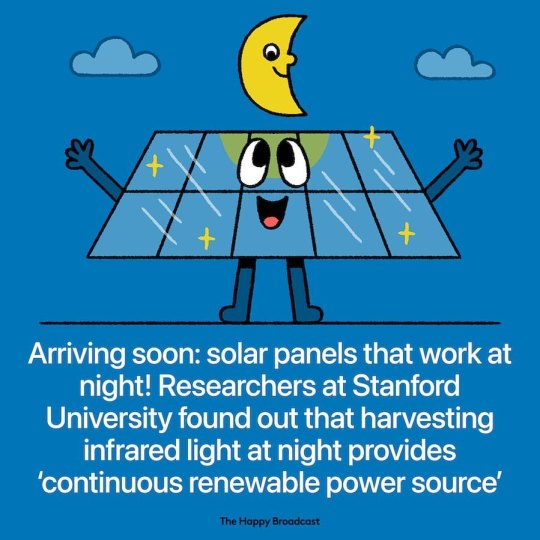
It likely goes without saying, but of all the energy solar panels generated last year, none of it was produced at night. New research is showing that doesn't have to be the case. Researchers at Stanford modified commercially available solar panels to generate a small amount of electricity at night by exploiting a process known as radiative cooling, which relies on, no lie, the frigid vacuum of space. When an object is facing the sky at night, it radiates heat out to outer space, which means that an object can become cooler than the air temperature around it. This effect could have obvious applications in cooling buildings, but the difference in temperature can also be used to generate electricity. While the modified panels generate a tiny amount of energy compared with what a modern solar panel does during the day, that energy could still be useful, especially at night when energy demand is much lower, the researchers said. Source: CNET (link in bio) #solarenergy #technology #renewables https://www.instagram.com/p/Cd-4fWmrfNc/?igshid=NGJjMDIxMWI=
2K notes
·
View notes
Text
A little bit of dreaming...
One day, there will be no more fossil fuels. We do not have a say in this. They simply will be gone, consumed, transformed from potential energy into kinetic and off to the next thing they will be.
Instead, we will be sunflowers, traveling with the light.
Instead, we will be sailboats, traveling with the wind.
Instead, we will be Hephaestus' hearth, warmed by the molten rock below.
One day soon we will live an alternative energy reality and it is up to us to prepare.
106 notes
·
View notes
Text
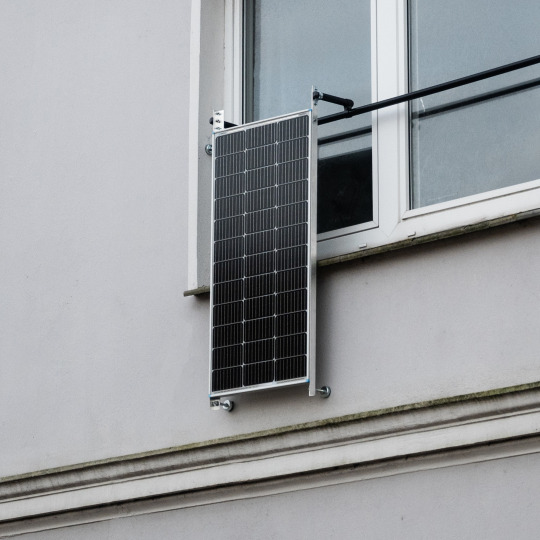


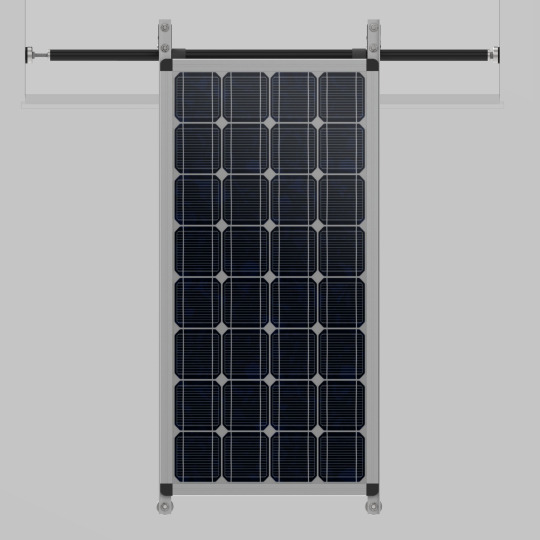
I'm living in a flat without balcony on the second floor. I'm not allowed to modify the building stock, like drilling holes into exterior walls. Nonetheless, I want to use solar energy to cover the base load of my flat. Over the last couple months I developed a DIY solution to accomplish just that. A solar panel is clamped into a window embrasure with a telescopic rod. The power is carried through the window into my flat with a special flat conductor.
This is a work in progress, so please visit the project documentation at https://hackaday.io/project/192011-window-mount-for-solar-panels if you are interested.
18 notes
·
View notes
Text





Craziest planets in the universe
Via astrogirl.science
#astronomyy#astronomiaamadora#astronomie#astronomiefrance#astronomie365#astroitalia#planets#solarsystem#solarsystemtattoo#exoplanets#supermassiveblackhole#stephenhawkings#stephenhawkingquotes#starsky#solarenergy#starsystem#planetarysystem#astronomus#theoryofeverything#cosmicperspective#satelliteimage#universo#quasar#wormhole#fantasticuniverse#hyperspace#milkywaychaser#briancox#planetas#exoplanetas
96 notes
·
View notes
Text
mini solar panel epoxy resin solar panels PET for solar kits module system toys outdoor led light
In the quest for sustainable energy solutions, researchers and innovators continuously explore new technologies to harness the power of the sun. Among these advancements, epoxy resin solar panels stand out as a promising innovation that offers efficiency, durability, and environmental benefits. In this blog, we delve into the world of epoxy resin solar panels, exploring their construction, benefits, and potential impact on the renewable energy landscape.
#solarparts#minisolarpanel#epoxyresin#solarmodule#diy#Solarteachingaids#outdoor#ledlight#solarenergy#solar power#energiasolar#energiasolare#energíasolar#énergiesolaire#solar energy
2 notes
·
View notes
Text

PM Surya Ghar - Muft Bijli Yojna
Government major step towards sustainability towards solar
Residential solar subsidy upto Rs. 78,000, Installing solar evan more affordable
If you are interested, then contact us to know more.
Call: +91 6352010650
Visit: www.somenergysystems.com
#suryaghar#pmsuryaghar#muftbijli#solarsubsidy#solarrooftop#solar#gosolar#gogreen#solarenergy#vadodara#gujarat#india#ourvadodara
2 notes
·
View notes
Text
#solarpanel#solarenergy#solar#solarpower#solarpanels#renewableenergy#solarsystem#greenenergy#gogreen#cleanenergy#gosolar#solarpowered#energy#solarpv#solarinstallation#photovoltaic#sustainability#solarcell#renewables#panelsurya#renewable#environment#plts#inverter#sun#sustainableenergy#energiasolar#offgrid#sunpower#electricity
2 notes
·
View notes
Photo



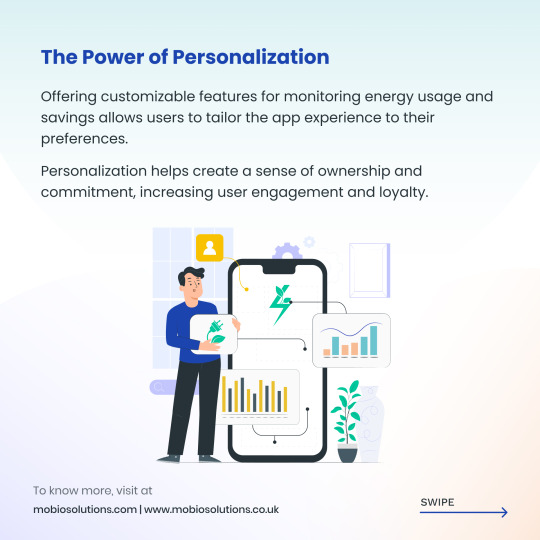


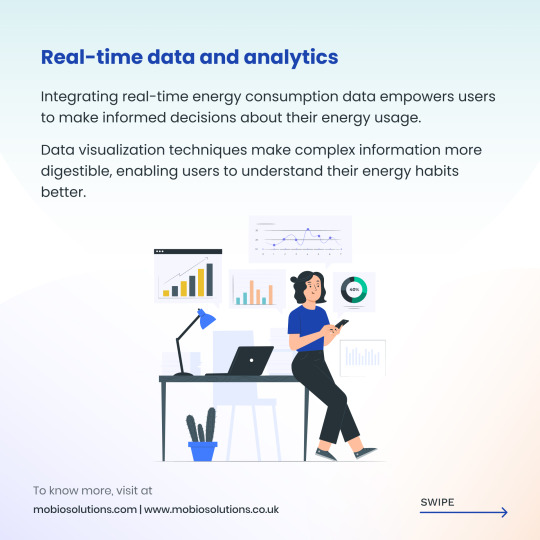


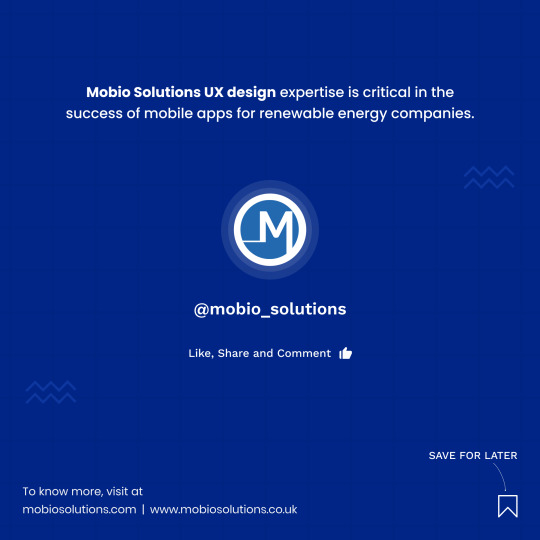
Are you ready to dive into the exciting world of renewable energy and user experience (UX) design? Join us as we explore the untapped potential of mobile apps in shaping the future of renewable energy companies!
Don't miss this riveting carousel and be at the forefront of shaping a sustainable future! Follow us now to stay updated on the latest trends and insights in mobile app UX design for renewable energy companies.
#renewableenergy#energy industry#solarenergy#WindEnergy#appdevelopment#appdesign#mobileapp#mobileappdesign#userExperience#UXdesign#UIdesign#uiuxdesign#Mobileappdevelopment#mobiosolutions
7 notes
·
View notes
Text
Optimizing Your Solar System Year-Round
As the Earth tilts and turns, the changing seasons can have a profound effect on the performance of solar power systems. From the height of summer to the depths of winter, a solar panel owner’s strategy must adapt to ensure their system is optimized throughout the year. Let's take a closer look into how each season affects solar output and how you can maximize your system's efficiency, regardless of the weather.
Summer: Sun’s Out, Panels Out
Summer often means longer days and more direct sunlight, which is excellent news for solar energy production. In the United States, the average solar panel efficiency can climb during these months due to increased insolation – a term that refers to the amount of solar radiation reaching a given area. The Solar Energy Industries Association (SEIA) reports that in peak summer, a well-positioned solar panel system can produce twice as much energy as during winter. However, extreme heat can sometimes decrease panel efficiency, a phenomenon known as temperature coefficient, typically resulting in a performance drop of about 0.5% for every 1°C above 25°C.
Fall: Preparing for the Pivot
As fall approaches, the sun’s angle begins to lower, and days get shorter, which can lead to a decrease in solar production. Despite this, cooler temperatures can enhance panel efficiency, slightly offsetting the loss from reduced daylight. It’s essential to prepare for leaf fall during this season, as debris can obstruct panels and impact performance. A National Renewable Energy Laboratory (NREL) study suggests that a single leaf on a panel can reduce power output by up to 10%.
Winter: Weathering the Cold
Contrary to what many assume, solar panels don't go dormant in winter. They can still produce significant energy, especially in areas with strong winter sunlight. Snow can even act like a mirror, reflecting light and potentially increasing performance on clear days. The key statistic to watch, however, is daylight hours. For instance, according to the U.S. Energy Information Administration (EIA), regions like the Pacific Northwest see a reduction of about 40% in solar radiation from November through February, affecting potential output.
Spring: A Time for Tune-Ups
Spring is often seen as a time of renewal, and for solar panel systems, it's an ideal period for maintenance to optimize energy capture. As days lengthen, your solar system's production will naturally increase. To fully capitalize on this, ensure your system is free from the winter’s accumulation of dirt and debris. Data from the Department of Energy indicates that a clean solar panel is approximately 21% more efficient than one covered in the season’s grime.
Year-Round Maintenance and Monitoring
Regular maintenance is crucial for keeping your solar power system at peak performance. It’s advisable to check your system's output against benchmarks provided by your installer or local averages. Most modern systems come with apps or monitoring software, enabling you to track energy production in real-time and notice any significant discrepancies that may indicate an issue.
Utilizing Battery Storage
To truly optimize your system year-round, consider integrating battery storage. This allows you to capture excess energy during peak production times and use it when the sun isn’t shining. For example, Tesla’s Powerwall reports that, when used effectively, battery storage can increase the self-consumption of solar power from 30% to upwards of 70%.
Embracing Energy Efficiency
Lastly, optimizing a solar system isn’t just about maximizing production; it’s also about minimizing consumption. Implementing energy efficiency measures within your home can significantly impact how much solar power you need to meet your energy demands. The EPA suggests that for every kilowatt-hour of solar energy used efficiently, a typical system’s return on investment can improve by 5-10%.
By understanding and adapting to the seasonal shifts in solar production, you can ensure your system is not only effective but also contributes to a sustainable future all year round. Whether you’re dealing with the abundance of summer sun or the scarcity of winter light, these strategies will help you stay powered through every season.
#solarpanels#solar#solarenergy#photovoltaics#solartechnology#renewables#sustainability#greenenergy#cleanenergy#residentialsolar#solarathome#energyefficiency#solarroi
4 notes
·
View notes
Photo

Turtles make Stephany a happy human. 🐢 . . . #turtle #portland #oregon #turtles #ilike #iliketurtles #turtlelove #turtlelover #turtlelovers #turtleloversworld #turtles🐢 #turtleturtle #turtlethursday #solarsales #solarenergy #oregon #washington #pnw #financialfreedom #financialindependence #asset #equity #sunny #renewables #energy #utilitybill #savemoney #savingmoney #moneysaver #savingtheearth #savingenergy https://www.instagram.com/p/Cg2YC2Xh_al/?igshid=NGJjMDIxMWI=
#turtle#portland#oregon#turtles#ilike#iliketurtles#turtlelove#turtlelover#turtlelovers#turtleloversworld#turtles🐢#turtleturtle#turtlethursday#solarsales#solarenergy#washington#pnw#financialfreedom#financialindependence#asset#equity#sunny#renewables#energy#utilitybill#savemoney#savingmoney#moneysaver#savingtheearth#savingenergy
25 notes
·
View notes
Text

global building integrated photovoltaics (BIPV) market size at USD 14.06 billion in 2022. During the forecast period between 2023 and 2029, BlueWeave expects global building integrated photovoltaics (BIPV) market size to grow at a significant CAGR of 21% reaching a value of USD 44.45 billion by 2029. Major growth drivers for the global building integrated photovoltaics market include an increasing adoption of renewable energy sources, a growing focus on sustainable construction practices, supportive government incentives and regulations, rapid technological advancements in BIPV, and rising demand for green buildings. The market is further propelled by a strong emphasis on energy efficiency and sustainable development, with expectations of continued growth in the forecast period. Global awareness and adoption of solar power have been driven by countries prioritizing energy security and self-sufficiency. Supportive government legislations and commitments to reduce greenhouse gas emissions further fuel market growth. Key countries driving the transition to solar energy include Germany, Italy, France, the United Kingdom, the United States, China, Japan, and India. With these favorable conditions, the solar panel market is poised for significant expansion in the upcoming years. However, high initial costs of investments and complexity of building integrated photovoltaics (BIPV) installations are anticipated to restrain the overall market growth during the period in analysis.
Global Building Integrated Photovoltaics Market – Overview
The global building integrated photovoltaics (BIPV) market refers to the integration of photovoltaic materials into building elements, such as windows, facades, and roofs, to generate electricity while simultaneously serving their functional purposes. BIPV technology enables the seamless incorporation of solar panels into the building's design, allowing for the production of renewable energy on-site. This innovative approach combines the benefits of solar power generation with the aesthetics and functionality of building materials. BIPV systems can contribute to energy efficiency, reduce reliance on traditional power sources, and lower carbon emissions. The global BIPV market encompasses various technologies, materials, and applications aimed at integrating solar power generation into the built environment to meet the increasing demand for sustainable and energy-efficient buildings.
Sample Request @https://www.blueweaveconsulting.com/report/building-integrated-photovoltaics-market/report-sample
2 notes
·
View notes
Text

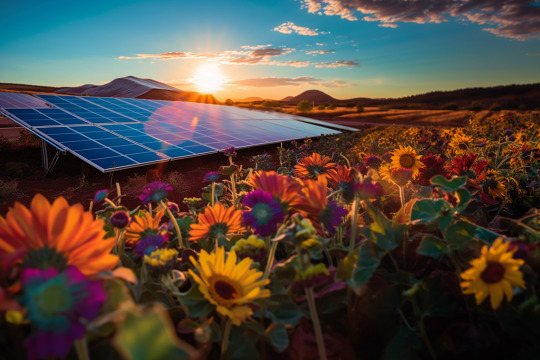
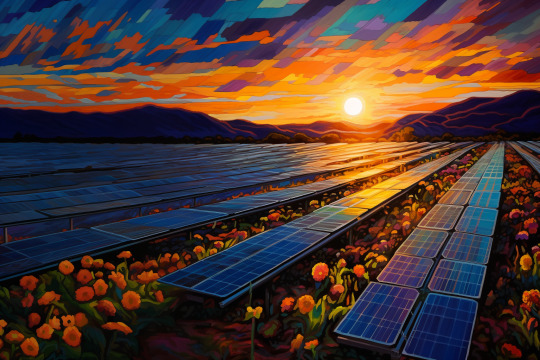
"Lovers alone wear sunlight" — E. E. Cummings
#solar#solarenergy#poetry#quote#e e cummings#quotes#solarpower#solar farms#solar energy#environment#pollinator friendly#floral solar#beautiful renewables#clean energy transformation#clean energy#solar inspiration#inspiration
2 notes
·
View notes
Text
Going Green with Solar Energy: How to Join the New Revolution
Solar energy is a form of renewable energy that uses sunlight to generate electricity or heat. It is one of the most promising sources of clean energy for the future, as it does not emit greenhouse gases or other pollutants. It also has many benefits for the environment, the economy, and the society.
However, solar energy is not just a source of power. It is also a catalyst for a new green revolution. The green revolution refers to the rapid increase in agricultural production that occurred in the 20th century, thanks to the use of new technologies and practices. However, some critics argue that the green revolution also caused environmental and social problems, such as soil degradation, water scarcity, and inequality.
A new green revolution is needed to address these challenges and ensure food security and sustainability for the world’s population. One way to achieve this is by using solar energy to power irrigation systems, crop processing, and storage facilities. Solar energy can also help reduce the dependence on fossil fuels and improve the quality of life for rural communities.
In this article, we will explore how solar energy can power a new green revolution, and what are the benefits and challenges of doing so. We will also provide some tips and advice on how to join this movement and make a positive difference in the world.
#solarenergy#greenenergy#gogreen#sustainability#savetheplanet#solarinstallation#renewableenergy#climatechange
2 notes
·
View notes
Text


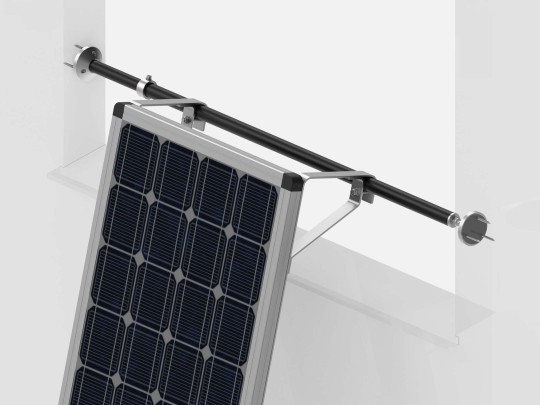

In times of global warming and high energy cost, many wish for taking part in the energy revolution. House owners can mount a photovoltaic system on their roof, balcony owners can hang solar panels from the handrails. However, almost half of the German population lives in flats without balconies. Until now it has not been possible for them to independently produce solar power.
This product concept is a proposed solution to fill this large market niche. To the delight of renters, the building stock is not or barely modified in the process. A telescopic rod is clamped into a window embrasure to hang up a common photovoltaic panel. The electricity is carried to an inverter in the flat using a flat conductor under the window.
4 notes
·
View notes
Text

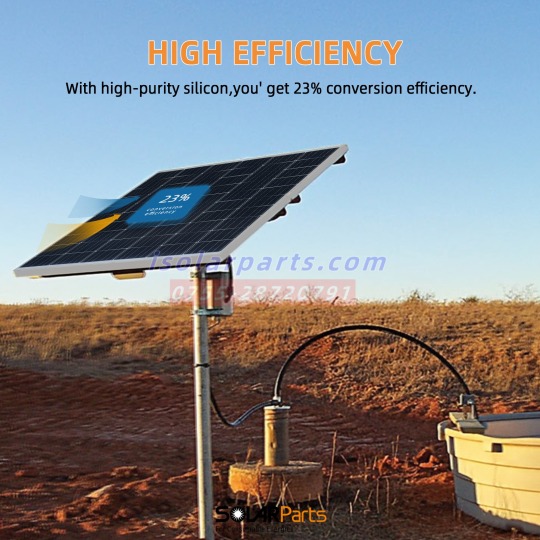
Why Solar? Why SOLARPARTS?
You Control Your Electricity;
Lower Monthly Costs, and Added Value in Your Home;
Best Price and Choice, Guaranteed.
Solar Power Made Easy - Efficient Solar Solutions
#rigidsolarpanel#solarparts#solarenergy#energíasolar#Énergiesolaire#solarpanelsupplier#Solarpanelmanufacturer#solarpanelprice#solarpanelsforhome#RV#solar energy#solar power#energiasolar#energiasolare#太陽能
3 notes
·
View notes
Text
Renewable Energy M&A: Japanese utility TEPCO enters UK offshore wind market by acquiring Flotation Energy and its 12 GW pipeline

Tokyo Electric Power Company (TEPCO) is acquiring 100% of Scotland-based Flotation Energy's issued shares through their subsidiary, TEPCO Renewable Power. The deal marks TEPCO's first major venture into offshore wind markets in the UK and overseas. Flotation Energy currently holds a stake in two offshore wind projects in the UK - the 480 MW Morecambe offshore wind farm, awarded as part of the country’s recent Leasing Round 4, as well as the 100 MW White Cross wind test and demonstration project, also awarded by the Crown Estate. The company has a 12 GW pipeline of commercial-scale, fixed-bottom and floating wind projects in the UK, Ireland, Taiwan, Japan and Australia, and plans to expand into many more key markets.
Read more at: https://enerdatics.com/blog/renewable-energy-m-and-a-japanese-utility-tepco-enters-uk-offshore-wind-market-by-acquiring-flotation-energy-and-its-12-gw-pipeline/
#energy#alternativeenergy#renewableenergy#energytransition#enerdatics#solarenergy#windpower#wind#solar#offshorewind
12 notes
·
View notes